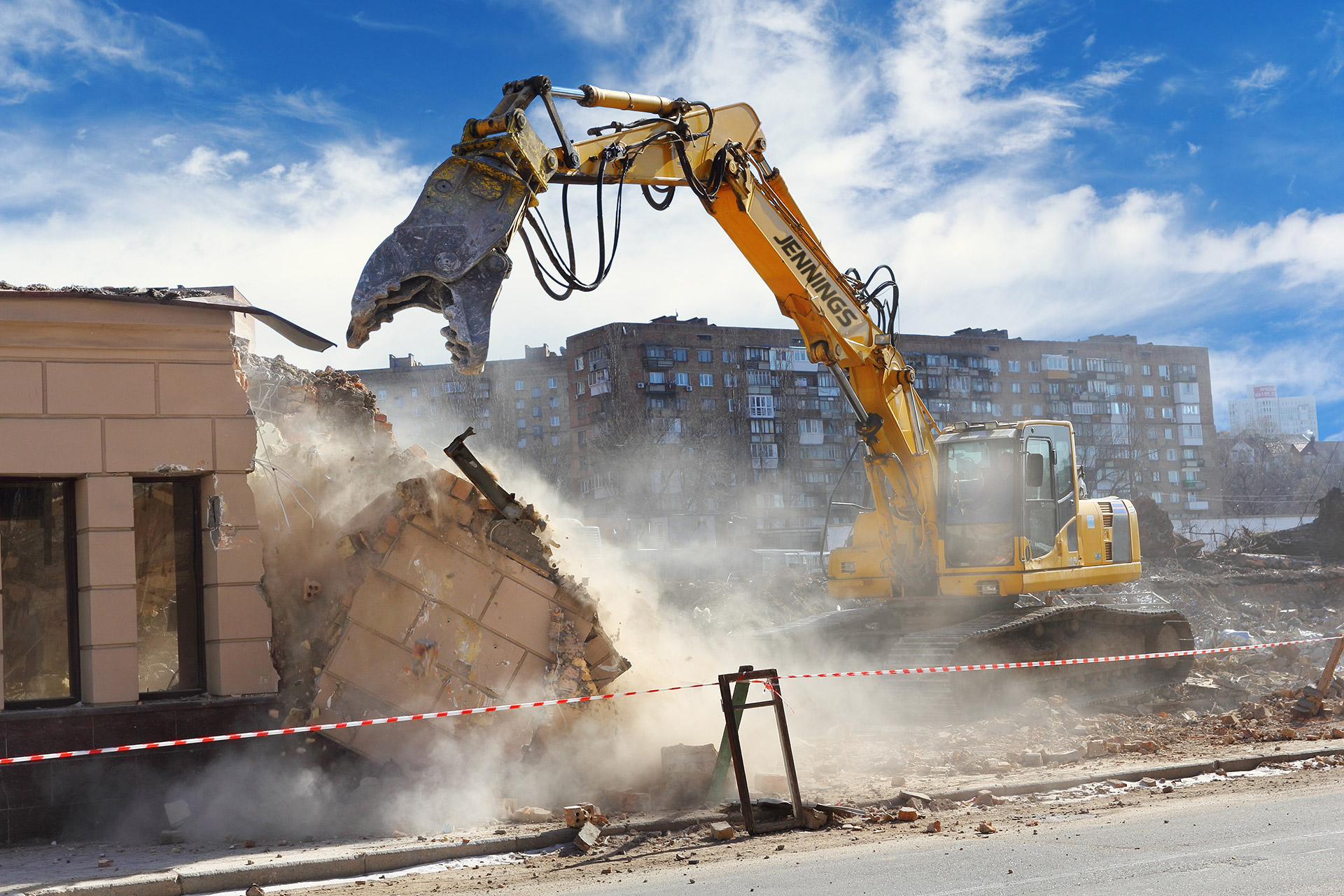
04 Jul Key components of a safe and successful Demolition process
We can’t speak for all demolition experts, but for us the key component of a safe and successful demolition process is proper planning. Without it, the only approach possible is an uninformed one, and a potentially unsafe one too.
There are several processes involved with proper planning. We can’t list them all here, so what we’ll do is cover the main four processes below. These largely determine the demolition process and dictate the services required. They’re also universal, i.e. they’re not only used by us but by other reputable firms too.
- Site survey
Site surveys are required for two reasons:
- To determine the current state of the site and structure
- To locate any asbestos-containing materials and identify other risks to health
Site surveys are sometimes called “asbestos surveys” but the two terms are interchangeable as far as we’re concerned. In the United Kingdom, there is a requirement in CAR 2012 (Regulation 7) for all ACMs to be removed from a building before demolition. So, this is much about legal compliance as it is health and safety.
- Environmental survey
Environmental surveys are required for two reasons:
- To determine the risk to the local environment from demolition
- To identity measures that need to be taken to minimise these risks
We take our environmental responsibility extremely seriously. Whether the measures required to minimise risk involve cleaning up rubble within hours of demolition or putting in place a strict erosion and sedimentation control plan, we’ll do it. The very last thing we want is for our work to adversely affect the environment.
- Study building blueprints
We need to study building blueprints for two reasons:
- To understand the makeup of the building and the depths of its structure
- To determine its weak points and supporting structure
This is particularly important if we’re going to demolish a building with implosion. This involves placing blasting charges on a building’s support structure. The explosion from these knocks the supports out, causing the building to collapse into itself. We always study building blueprints, however, regardless of demolition type.
- Determine best demolition process
Based on our assessment of the above works, we can determine the best demolition process for any project. Here’s some examples:
- Concrete high-rise: Implosion. The surrounding site will need securing and access limited to the public.
- Bungalow: Bulldozers. These can reach the roof and pull it down in a safe, controlled way. Limited risk to public.
- Period building: De-building by hand. This will preserve period stonework for reuse in construction and renovation work.
Safety in demolition
Now that you understand the processes involved in proper planning, we can delve into how safety in demolition is observed and managed.
The Health and Safety Executive (HSE) sets out clear guidelines for safety on building and construction sites. The Health and Safety at Work etc Act 1974 is the law employers are obligated to comply with. This makes it the responsibility of the employer, and the employee, to ensure health and safety at work. This is a key component of a safe demolition process. It’s the framework we follow ourselves.
Training plays a huge role in this. At Jennings, we have experienced project managers, supervisors and workers. We also have apprentices. Everyone who works on site undergoes periodic training to make them aware of health and safety. We also equip everyone with the necessary tools to do their jobs properly.
Success in demolition
There are four things that make a successful demolition project:
- Proper safety
- Proper planning
- Proper staffing
- Proper tools and machinery
We guarantee demolition success by following a structured process to determine the best demolition technique. Whether it’s by wrecking ball, implosion or by hand, there’s a technique to suit every project. We can also use a combination of techniques to get the job done. For example, mechanical demolition and deconstruction by hand.
The importance of proper staffing and tools cannot be overstated either. People make projects spin. Without them, jobs wouldn’t get done. It’s important to remember this is one of the few remaining industries where manual labour is essential.
With our expertise and experience, any demolition project can be seen through with success. If you have a project of your own, we’d be delighted to assist. We’ve been trading for over 50 years with offices in Leeds and Hull. Contact us here to find out more or send us an email at [email protected].



No Comments